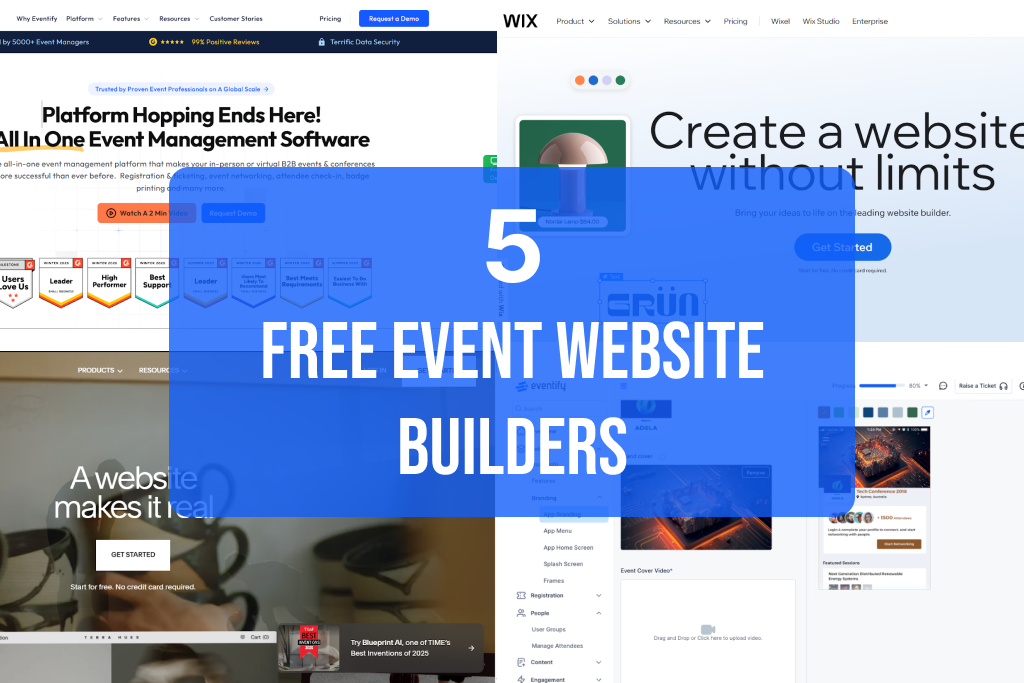The world of meetings has undergone a revolution. Gone are the days when face-to-face interactions were the only option. Virtual meeting platforms have exploded in popularity, offering a convenient and cost-effective way to connect with colleagues and clients across the globe. But with this newfound flexibility comes a crucial question: in-person or virtual, which meeting format reigns supreme?
The answer, like most things in life, isn't a simple one-size-fits-all. The ideal format depends on several factors, and understanding the strengths and weaknesses of each approach is key to maximizing productivity and achieving your meeting goals.
.jpeg)
The Power of Physical Presence: When In-Person Wins
There's something undeniably powerful about face-to-face interaction. In-person meetings offer a unique space for
- Building Relationships: The ability to read body language and engage in casual conversations fosters trust and strengthens connections, crucial for building strong teams and fostering a positive company culture.
- Brainstorming Bonanzas: The energy and spontaneity of in-person meetings fuel creative thinking. Whiteboard brainstorming sessions and real-time feedback exchange can lead to innovative solutions and breakthrough ideas.
- Negotiation Nuances: Complex negotiations often rely heavily on nonverbal cues. Reading a person's body language and facial expressions can be the difference between striking a deal or walking away empty-handed.
- Team Building & Company Culture: Shared experiences like in-person meetings can be powerful tools for team building and strengthening company culture. Engaging activities and casual interactions can boost morale and foster stronger bonds among colleagues.
"In-person meetings allow for a richer exchange of ideas through nonverbal cues, fostering stronger connections and building trust more effectively." (Source: TED Talk - The Power of Introverts)
However, in-person meetings also have limitations
- Cost Factor: Travel expenses, venue rentals, and catering can quickly escalate, especially for meetings involving participants from different locations.
- Time Commitment: Travel time can be a significant hurdle, particularly for geographically dispersed teams. This can limit participation and hinder productivity.
- Accessibility Challenges: People with disabilities or those located remotely might face difficulties attending in-person meetings, limiting inclusivity.
.jpeg)
The Virtual Advantage: Convenience and Cost-Effectiveness
Virtual meetings offer a compelling alternative, especially for situations where
- Quick Updates Reign Supreme: Need a short check-in or progress report? Virtual meetings provide a convenient platform for these quick bursts of communication.
- Geography is No Obstacle: Virtual platforms eliminate geographical boundaries. Connect seamlessly with team members or clients across the globe, saving time and money.
- Presentations Take Center Stage: Virtual platforms often offer features like screen sharing and presentation tools, making them ideal for delivering clear and concise presentations or sharing information effectively.
- Cost Effectiveness: Virtual meetings eliminate travel costs and are generally more budget-friendly, making them ideal for resource-conscious teams.
However, virtual meetings aren't without their drawbacks
- Reduced Engagement: Maintaining focus and participant engagement can be more challenging in a virtual setting. Distractions abound, and the lack of physical presence can lead to decreased participation.
- Technical Glitches: Virtual meetings are susceptible to technical issues like internet connection problems or audio/video glitches. These disruptions can derail the flow of the meeting and hinder communication.
- Spontaneous brainstorming or creative collaboration can be less effective in a virtual environment. The back-and-forth exchange of ideas can feel disjointed, potentially hindering creative problem-solving.
Here are some additional factors to consider
- Meeting Purpose: What is the main objective of the meeting? If building relationships or creative collaboration is crucial, in-person might be better. For presentations or quick updates, virtual could suffice. Feeling lost, check out our Virtual conference guide!
- Number of Participants: For smaller, focused discussions, either format could work. For larger groups, virtual meetings can be more manageable.
- Participant Preferences: Consider the preferences of the participants involved. Some might prefer the in-person interaction, while others might appreciate the convenience of virtual attendance.
The Hybrid Approach: The Best of Both Worlds
In today's dynamic work environment, the most effective approach might be a hybrid model. For example
- Core Group In-Person, Remote Participants Virtually: A core group can meet in person for brainstorming or relationship building, while remote participants join virtually for key discussions and presentations.
- Pre-Meeting Virtual Prep, In-Person Follow-Up: Use a virtual pre-meeting to share information and establish agendas. Then, follow up with an in-person session for in-depth discussions and team building.
The future of meetings lies in a hybrid approach, leveraging the strengths of both virtual and in-person interactions." (Source: Harvard Business Review)
Key differences between In-Person Meeting and Virtual Meetings
While analyzing a physical meeting or a virtual meeting, it is important know the breakdown of the key differences:
Engagement and Interaction
- In-Person: Physical presence allows for natural body language cues and facial expressions, leading to higher engagement and a more dynamic flow of conversation. Spontaneous interactions and side conversations are also more likely to occur.
- Virtual: Engagement can be a challenge due to the lack of physical presence. Maintaining focus and active participation requires deliberate effort from organizers and participants.
Communication and Collaboration
- In-Person: Communication is often more nuanced and effective due to nonverbal cues. Complex discussions and brainstorming sessions can be easier to navigate with in-person interaction.
- Virtual: Clear and concise communication is essential due to the lack of nonverbal cues. Collaboration tools and techniques might be needed to facilitate brainstorming and idea-sharing effectively.
Efficiency and Logistics
- In-Person: Meetings can be prone to time overruns due to casual conversation and greetings. Scheduling can be more complex due to the need to find a common time and location that works for everyone.
- Virtual: Meetings typically start and end on time due to the structured nature of the virtual platform. Scheduling is often easier due to flexibility in location and time zones for remote participants.
Accessibility and Inclusivity
- In-Person: Accessibility can be limited for those who work remotely or have disabilities that make traveling to a physical location difficult.
- Virtual: Virtual meetings are more inclusive, allowing participation from remote team members and those with disabilities that might hinder physical attendance.
Cost and Resources
- In-Person: Meetings can be more expensive due to venue rental costs, catering, and travel expenses for participants.
- Virtual: Virtual platforms often have free or low-cost options, making them a more budget-friendly choice.
What should you pick?
Virtual or in-person - choosing between these two is not an easy one. While choosing the right platform, you need to align it with your objectives and constraints
Define your meeting goals and purposes
Information Sharing: Presentations, lectures, or status updates can be effectively delivered in a virtual format, often with features like screen sharing and recordings for later reference.
Decision-Making: Complex decisions might benefit from the back-and-forth discussion and ability to read non-verbal cues facilitated by an in-person meeting.
Relationship-Building: Establishing trust and rapport is easier in face-to-face interactions. In-person meetings are ideal for fostering connections and building relationships.
Brainstorming: The energy and spontaneity of an in-person setting can fuel creative thinking and idea generation. However, virtual platforms with collaborative tools like whiteboards can also facilitate brainstorming sessions.
Training: Training sessions can be conducted effectively in both formats. Virtual platforms offer ease of access for remote participants, while in-person training allows for hands-on activities and real-time feedback.
Outcomes and Deliverables: Clearly defined deliverables like project plans or action items are achievable in either format, as long as the chosen platform facilitates collaborative tools and clear communication.
Importance of Interpersonal Communication: Critical reliance on non-verbal cues for decision-making or negotiation might necessitate an in-person meeting. However, some virtual platforms offer features like video conferencing that can partially capture non-verbal communication.
Confidentiality and Sensitivity: Highly confidential or sensitive discussions might require the additional security measures that can come with an in-person setting. However, some virtual platforms offer encryption and security features to mitigate concerns.
.jpeg)
Attendee locations are a vital part
Accessibility: Remember to factor in any limitations attendees might have, that could affect their ability to attend in-person (disabilities, childcare needs, transportation).
Time Zones: Virtual meetings with participants across time zones require finding a time that works for most. Be prepared for some flexibility and compromise.
Cultural Differences: If your attendees come from diverse backgrounds, be mindful of communication styles and preferences. In-person meetings might be better suited for cultures that value personal interaction.
Globally Dispersed Teams: Virtual meetings are the clear winner here. Eliminate travel barriers and time zone conflicts to ensure everyone can participate seamlessly.
Nationally Dispersed Teams: Virtual meetings remain a strong contender. While travel across the country might be feasible, cost and time commitment can be significant factors. Consider an in-person meeting if team building or fostering relationships is a priority.
Regionally Dispersed Teams: For teams within a reasonable driving distance, in-person meetings become a more viable option. Weigh the travel time and cost involved. If it's manageable, an in-person gathering can enhance collaboration and connection.
Locally Based Teams: For teams within the same city or close proximity, in-person meetings are generally the most efficient and cost-effective approach. They allow for face-to-face interaction, spontaneous brainstorming, and easier team-building activities.
Consider your budget
- Meeting Budget: Clearly define the budget allocated for the meeting. This will guide your decision as virtual meetings generally cost less than in-person ones.
While virtual meetings are budget-friendly, consider any potential costs associated with:
- Virtual platform subscriptions (if your chosen platform requires a paid plan)
- Additional technology (upgrades to internet bandwidth, headsets for participants)
- Engagement tools (polling software, whiteboarding applications)
In-Person Meeting Costs: Factor in expenses like:
- Travel: This includes transportation costs for attendees, potentially including flights, accommodation, and meals.
- Venue rental (if required)
- Catering (food and beverages)
Decision making is the key
- Decision Matrix: Create a table listing relevant factors (e.g., information sharing, decision-making, budget). Assign weights to each factor based on its importance to your specific meeting. Then, score each format (in-person vs. virtual) on how well it aligns with each factor. The format with the highest overall score is likely the most effective choice.
- Cost-Benefit Analysis: Compare the potential costs (travel, venue rentals, platform fees) for each format. Then, weigh these costs against the expected benefits (increased participation, improved engagement, better decision-making). Choose the format that offers the greatest return on investment.
- Stakeholder Alignment: Engage with key stakeholders to discuss their preferences and ensure the chosen format aligns with organizational objectives and policies.
- Attendee Preferences: Consider conducting a poll or survey to gauge attendee comfort levels with virtual or in-person meetings. Their feedback can provide valuable insights into potential challenges or preferences.
The Final Verdict: It's All About Your Needs
There's no single best answer to the in-person vs. virtual debate. The ideal format depends on your specific meeting goals, participant locations, budget constraints, and desired level of engagement. Understanding the strengths and weaknesses of each approach empowers you to make informed decisions and choose the platform that will propel your meeting to success.
FAQs
Which format fosters more engagement?
In-person meetings generally lead to higher engagement due to physical presence and nonverbal cues. Facial expressions, body language, and spontaneous interactions can create a more dynamic and engaging atmosphere.
When should I choose a virtual meeting?
Virtual meetings are a good choice for quick updates, information sharing, geographically dispersed teams, or budget constraints.
Which format is better for complex discussions?
In-person meetings can be advantageous for complex discussions or brainstorming sessions. Nonverbal cues and the ability to whiteboard or sketch ideas together can aid communication.
Which format is more time-efficient?
Virtual meetings typically start and end on time due to the structured nature of the platform. Eliminating travel time can also be a time saver.
Which format is more accessible?
Virtual meetings allow participation from remote team members and those with disabilities that might hinder physical attendance.
Can I combine both formats?
Absolutely! Hybrid meetings, where some attend in person and others participate virtually, can be a great way to leverage the benefits of both approaches and ensure inclusivity.


.jpg)




.png)





